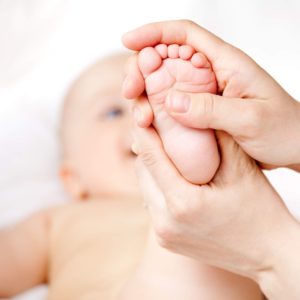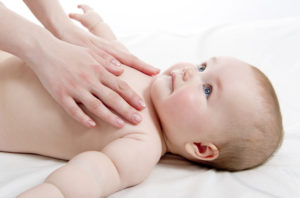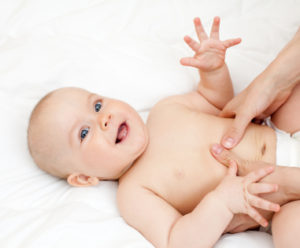[Disclosure: This post may contain some affiliate links. Meaning: If you would decide to make a purchase through those links, we would get a commission (at no costs to you)]
Baby massage is a lovely way to soothe, calm your baby. It can boosts their immune systems, helps foster muscle development and reduces their stress. It’s a wonderful way to bond with your little one and create a relaxing environment for both of you. Here are some baby massage tips and techniques to help you prepare to safely and gently massage your baby, while making sure the moment means more.
Creating a relaxing environment for baby massage
It can be a nice idea to introduce a baby massage after bath and before bed as part of a bedtime wind-down.
- Choose a time when your baby is awake and alert, not too hungry or too full
- Ensure the room is warm and lighting not too bright
- Have what you need ready: oil, towel, clean diapers and clothes
- Wash your hands and remove jewelry
- Use a safe and comfortable place to do the massage and position your baby so that he can see your face clearly
- Before starting, take time to relax with a few full breaths — this can help your baby relax too
- Babies are different, changing all the time. For instance, young babies may feel more secure if most of their clothes are left on and they feel close to their parents’ body
Use a small amount of an appropriately formulated oil or lotion, like JOHNSON’S® baby oil*. Use a small amount on your own hands — enough for your hands to glide comfortably over your baby’s skin. It’s best not to apply oil or lotion to irritated or red skin. If a rash develops, discontinue use. Always read the label before using any products.
NOTE: Don’t massage your baby if he’s sick or if he’s just been immunized—the area of the injection may still be sore.

Getting started with baby massage
Legs and feet. Hold your baby’s heel in one hand; with your other hand, start at the top of the thigh and slowly stroke all the way down to the ankle, gently squeezing the leg as you go, as if you were milking a cow. Reverse the motion and go from ankle to thigh. Then rub the feet with your thumbs, gently uncurling and stroking the toes. Switch legs. You can do these same strokes on the arms and hands.
Arms and hands. Take one of your baby’s arms in your hands and repeat the milking motion from his armpit all the way to his wrist. Then, take his hand and gently rotate the wrist a few times in each direction. Switch arms and repeat. Trace tiny circles all over the palm of each hand with your thumbs. Switch hands and repeat.

Chest. Fold your hands on your baby’s chest, then push out to the sides, and lightly
flatten your palms down over his chest. Repeat several times. Place one hand flat across the top of your baby’s chest. Stroke it gently down to his thighs. Repeat the motion, alternating hands, several times.

Tummy. If your baby’s tummy feels soft (not hard or full), massage his belly using circular, clockwise strokes. Babies’ tummies are sensitive, so if he gets unsettled, move on to the next step. Avoid massaging the belly button area if the cord hasn’t completely healed.
Head. Start with your hands on both sides of your baby’s head, then run your hands down both sides of his body, from his head to his toes. Next, draw tiny circles on your baby’s head with your fingertips.
Face. Fold your hands (as if you were praying) on your baby’s forehead, then gently push outward from the center. Next, use your thumb to draw a smile on your baby’s face by stroking from one cheek, across the upper lip to the other cheek. Repeat on the lower lip.

Back. If your baby is still relaxed once you’ve finished massaging the front of her body, you can turn your baby onto his tummy and use long, smooth strokes from head to toe. Finish with some long, firm strokes from your baby’s shoulders all the way to his feet. When you’re done, put on his diaper and cuddle or feed him. He’ll likely doze right off.
Warnings for baby massage
- Always keep one hand on your baby while massaging. Some babies might be sensitive to some oils. Look for any sign of an allergic reaction, and see your GP immediately if you’re worried.
- Keep all products out of reach of children. Keep any baby oil out of children’s reach to avoid drinking and accidental inhalation, which can cause serious injury. Should breathing problems occur, consult a doctor immediately.
Through massage, you can gain increased awareness of how your baby communicates. You’ll learn to read his likes, dislikes, desires and emotions. You’ll learn the best time for cuddling, playing and relaxing. And your relationship will grow as you and your baby will discover what is best for you both!
*affiliate link